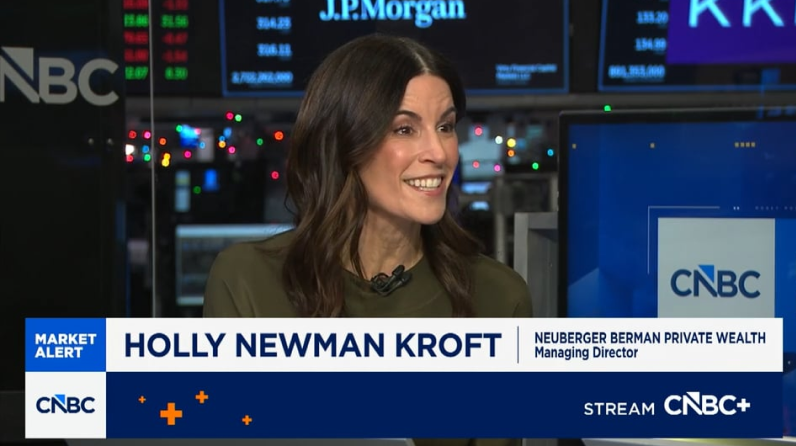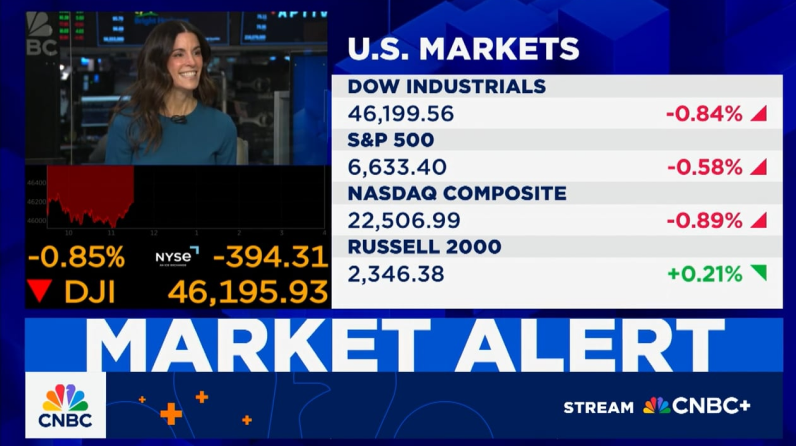

The probability for a July rate cut has fallen meaningfully in our view as the threat of higher inflation from tariffs, combined with a labor market that appears on the surface at least to be in equilibrium, gives the Fed the opportunity to wait and learn more for a little bit longer
June non-farm payrolls released today were much stronger than anticipated. While consensus was for a +106k gain, the whisper numbers were skewed much more to the downside, and the +147k print came as quite a surprise to most economists. In addition, prints for April and May -- which were expected to be revised lower -- were instead revised up by a combined +16k, bringing the trailing three-month average to +150k.
While the top line figure was quite strong, the quality of the job gains can certainly be questioned. State and local government hiring increased by +73k in the month, while private payrolls in aggregate were up only +74k – well off the +100k expected. Gains in health care (+39k), leisure and hospitality (+20k), and social assistance (+19k) continued to drive monthly gains. While there was a tick up in construction hiring (+15k), there were declines in other goods producing areas of the economy; manufacturing was lower by -7k. The unemployment rate fell to 4.1% from 4.2% as the labor participation rate fell to 62.3% from 62.4%, continuing its trend lower. In addition, wage growth slowed, as average hourly earnings grew by only +0.2% month-over-month and +3.7% year-over-year. Hours worked fell as well to 34.2 from 34.3 while manufacturing hours worked were steady at 40.1.
As for the Fed, today’s release once again lowered the probability of a Fed rate cut in September to 75%. The probability for a July rate cut also fell, from 25% to essentially zero, as the threat of higher inflation from tariffs, combined with a labor market that appears on the surface at least to be in equilibrium, giving the Fed the opportunity to wait and learn more for a little bit longer. Both President Trump and Treasury Secretary Scott Bessent have in their own ways indicated over the last week that the Fed’s posture is too tight and that there are several viable candidates to fill Chair Jerome Powell’s seat after his term expires in May 2026. Our view is that the probability of a cut in July is higher than zero, but still likely below 30% (at least given the data we have at the time of writing).
In addition to today’s employment data, investors’ eyes are on the U.S. House of Representatives, which stands ready to begin the vote on President Trump’s promised tax legislation, the “One Big Beautiful Bill Act.” The bill was sent back to House Speaker Mike Johnson from the Senate earlier in the week after a tough Senate negotiation which eventually required Vice President JD Vance to cast the deciding vote in favor of passage. Despite pushback on both the size of the bill, the commensurate increase in the budget deficit, and the impact on lower income households via Supplemental Nutrition Assistance Program (SNAP) and Medicaid changes, Speaker Johnson is likely to have the votes to push the bill through to President Trump for his approval ahead of the (admittedly arbitrary) July 4th deadline.
With the tax bill likely inked going into next week, we expect focus to shift to the end of the 90-day delay on the April 2nd reciprocal tariffs; this comes on the heels of announced progress in negotiations with China and Vietnam. The U.S. announced today that it would lift export license requirements for chip design software sales in China, in exchange for a commitment from China to shorten approval times for rare earth metal exports to the U.S. In addition, the U.S. and Vietnam have agreed in principle to tariff changes, with Vietnamese goods now subject to a 20% tariff on goods produced in the country and exported to the U.S. and a 40% tariff on transshipped goods – a nod to the Chinese practice of diverting goods through Vietnam to avoid previously enacted U.S. tariffs. Vietnam also agreed to drop all tariffs on goods imported into the country from the U.S. As we move closer to next week’s deadline, movement in terms of agreements with European Union and/or Japan may become more important, but the likelihood of another delay is, in our minds, high.
In response, risk markets are rallying to begin the holiday shortened session. U.S. stocks are up across the board, with the S&P 500 cresting a new intraday high; small caps are also strong, and the VIX is also lower on the day. Not surprisingly, gold is lower, and Treasury yields across the curve are slightly higher reflecting the lower rate cut probability in July.


VIDEO
The Kantor Group | Charles Kantor’s Year-End Reflections and Key Questions as We Head Into 2026

INSIGHTS
CIO Notebook: Dual Release of Delayed Non-Farm Payrolls Likely Supports Another Cut

INSIGHTS
Using Tax-Free Gifts for Wealth Transfer

INSIGHTS
CIO Notebook: Powell Plays the Middle as Fed Cuts Rates

MARKET COMMENTARY
Giving Thanks for Market Strength

INSIGHTS
CIO Notebook: September U.S. Non-Farm Payrolls Further Complicate the Narrative

VIDEO
Holly Newman Kroft Featured on CNBC’s Money Movers November 18
VIDEO
Plan for Peace of Mind with Our Estate Planning Organizer
MARKET COMMENTARY
Some Tricks, More Treats
INSIGHTS
CIO Notebook: Markets Rattled as Fed Leans Hawkish
REPLAY
Private Wealth Investment Outlook 4Q25
INSIGHTS
CIO Notebook: September Core CPI Comes in Late but Light
INSIGHTS
Charitable Fundraising: Moving Beyond Cash
IMPORTANT INFORMATION:
This material is provided for informational purposes only and nothing herein constitutes investment, legal, accounting or tax advice, or a recommendation to buy, sell or hold a security. This material is general in nature and is not directed to any category of investors and should not be regarded as individualized, a recommendation, investment advice or a suggestion to engage in or refrain from any investment-related course of action. Any views or opinions expressed may not reflect those of the firm as a whole. Neuberger Berman products and services may not be available in all jurisdictions or to all client types. Diversification does not guarantee profit or protect against loss in declining markets. Investing entails risks, including possible loss of principal. Investments in private equity are speculative and involve a higher degree of risk than more traditional investments. Investments in private equity are intended for sophisticated investors only. Unless otherwise indicated, returns shown reflect reinvestment of dividends and distributions. Indexes are unmanaged and are not available for direct investment. Investing entails risks, including possible loss of principal. Past performance is no guarantee of future results.
Portfolio positioning views expressed herein are those of Neuberger Berman’s Private Wealth Investment Group, which may include those of the Neuberger Berman’s Asset Allocation Committee. Asset allocation and positioning views are based on a hypothetical reference portfolio. The Private Wealth Investment Group analyzes market and economic indicators to develop asset allocation strategies. The Private Wealth Investment Group works in partnership with the Office of the CIO. The Private Wealth Investment Group also consults regularly with portfolio managers and investment officers across the firm. The Asset Allocation Committee is comprised of professionals across multiple disciplines, including equity and fixed income strategists and portfolio managers. The Asset Allocation Committee reviews and sets long-term asset allocation models, establishes preferred near-term tactical asset class allocations and, upon request, reviews asset allocations for large, diversified mandates. Asset Allocation Committee members are polled on asset classes and the positional views are representative of an Asset Allocation Committee consensus. The views of the Asset Allocation Committee and the Private Wealth Investment Group may not reflect the views of the firm as a whole and Neuberger Berman advisers and portfolio managers may take contrary positions to the views of the Asset Allocation Committee or the Private Wealth Investment Group. The Asset Allocation Committee and the Private Wealth Investment Group views do not constitute a prediction or projection of future events or future market behavior. Defensive positioning generally means an underweight bias on allocations to risk assets such as equities and alternatives. Positioning views may change over time without notice and actual client positioning may vary significantly. Discussion of yield characteristics or total returns of different asset classes are for illustrative purposes only. Such asset classes, such as equities and fixed income, may have significantly different overall risk-return characteristics which should be consider before investing.
The information in this material may contain projections, market outlooks or other forward-looking statements regarding future events, including economic, asset class and market outlooks or expectations, and is only current as of the date indicated. There is no assurance that such events, outlook and expectations will be achieved, and actual results may be significantly different than that shown here. The duration and characteristics of past market/economic cycles and market behavior, including any bull/bear markets, is no indication of the duration and characteristics of any current or future be market/economic cycles or behavior. Information on historical observations about asset or sub-asset classes is not intended to represent or predict future events. Historical trends do not imply, forecast or guarantee future results. Information is based on current views and market conditions, which will fluctuate and may be superseded by subsequent market events or for other reasons.
Discussions of any specific sectors and companies are for informational purposes only. This material is not intended as a formal research report and should not be relied upon as a basis for making an investment decision. The firm, its employees and advisory accounts may hold positions of any companies discussed. Nothing herein constitutes a recommendation to buy, sell or hold a security. It should not be assumed that any investments in securities, companies, sectors or markets identified and described were or will be profitable. Investment decisions and the appropriateness of this content should be made based on an investor's individual objectives and circumstances and in consultation with his or her advisors.
Neuberger Berman Investment Advisers LLC is a registered investment adviser.
The “Neuberger Berman” name and logo are registered service marks of Neuberger Berman Group LLC.